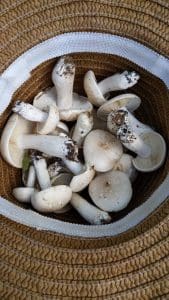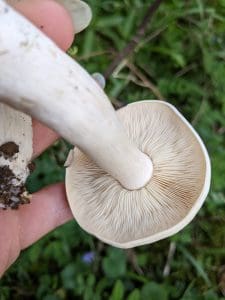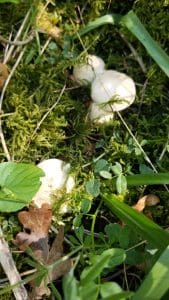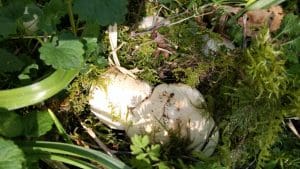St George’s Mushroom/ Spring / Edible
St Georges mushroom is a brilliant edible springtime mushroom, look around St George’s Day after some rain.
Botanical name
Calocybe gambosa
Meaning of botanical name
From the ancient Greek words kalos “pretty” and cubos “head”, and the Latin gambosus, meaning “club footed”. The species name is a reference to the often one-sided bulbousness of the stem base
Season
Spring
Scientific Classification:
Division: Basidiomycota, Class: Agaricomycetes, Order: Agaricales, Family: Lyophyllaceae, Genus: Calocybe, Species: Gambosa
Known harzard
None known
Could be confused with
The Deadly Fibrecap (Inocybe erubescens), but the gills of this bruise red and it does not smell mealy
Food of
The larvae of several species of fly
Range and distribution
Western Europe
St Georges Foraging Video
Habitat
Grassland, the edge of woodland, hedgerows
Physical characteristics of the st Georges mushroom
A stout white-capped mushroom, with white gills.
Cap
The cap grows to 5-15cm and often turns buff with age.
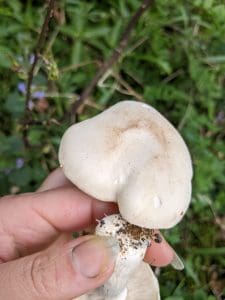
Stem
The stem is solid and more bulbous towards the base, white throughout and between 1 – 8cm. It has no ring on the stem and is often found growing in rings. It can be found growing in tight clusters and partial rings.
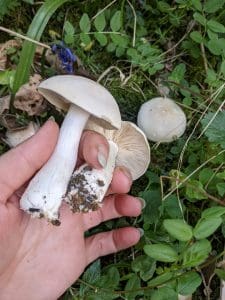
Gills
The gills are very narrow compared and crowded.
They are sinuate.
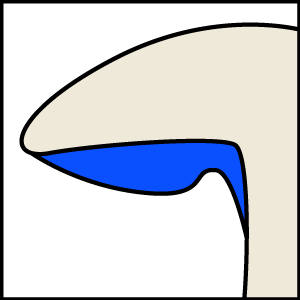
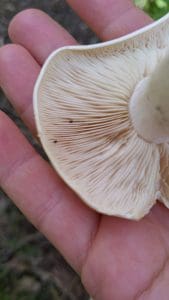
Smell
The mushroom has a strong mealy/wet dough scent.
Season
This mushroom fruits a few weeks before or after St George’s Day, 23 April; thus its common name
Edible use
One of the few mushrooms that can be eaten raw. St George’s Mushrooms can also be pickled. However, the most popular method to eat them is fried in butter. Cooking can remove some of the mealy odour/flavour. Also a good mushroom for dehydrating, as well as using in stocks
Herbal
Some evidence of antifungal properties is being researched currently.
If you have a medical complaint, please see your doctor
Miscellaneous
Be aware of traffic-related toxins in the soil if collecting from roadside
Tips and Observations
Look out for rings of lush grass throughout the year and check them in April to May



